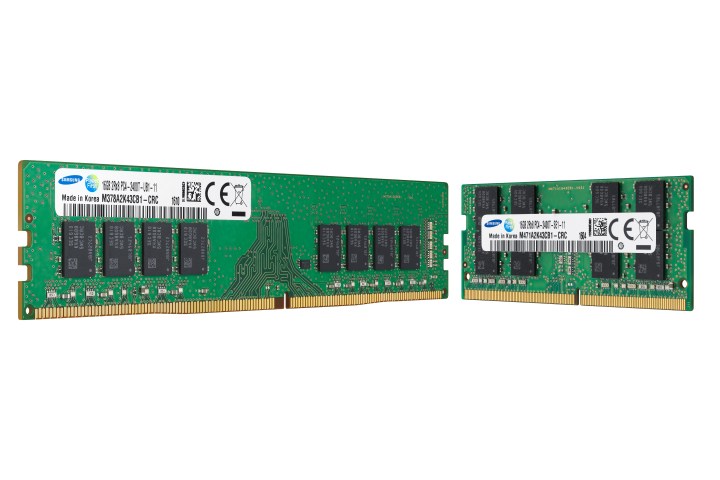
So what does this mean for the average consumer? We’ll see more products that utilize fast DDR4 memory, or fourth-generation double-data-rate modules. Samsung’s new DRAM supports a transfer rate of 3,200 megabits per second (Mbps), making it faster than the same chips manufactured with the 20nm process, which support a slower 2,400Mbps. The new chips are also less power hungry, consuming 10- to 20-percent less power than 20nm chips.
The new 10nm chips are ideal for large enterprise networks and high-performance computing systems. However, the company plans to introduce a mobile version of its 10nm-class chips later this year, offering high density and speed to devices like ultra-HD smartphones and tablets.
“The industry-first 10nm-class DRAM is the result of Samsung’s advanced memory design and manufacturing technology integration,” the company said on Monday. “To achieve an extremely high level of DRAM scalability, Samsung has taken its technological innovation one step further than what was used for 20nm DRAM. Key technology developments include improvements in proprietary cell design technology, QPT (quadruple patterning technology) lithography, and ultra-thin dielectric layer deposition.”
Samsung believes to 10nm DDR4 will help accelerate the shift to DDR4 memory across the industry.
On a more technical level, Samsung said that it utilized a proprietary circuit design technology and quadruple patterning lithography to create a 10nm-class cell structure. The company also improved memory performance by using refined dielectric layer deposition technology. Specifically, higher cell performance was achieved thanks to the engineers applying ultra-thin dielectric layers measuring around one 10 billionth of a meter on cell capacitors.
Samsung believes the shift to 10nm DDR4 will help accelerate the shift to DDR4 memory across the industry. The company also said that the rollout of 10nm-class chips improves the wafer productivity of 20nm 8Gb DDR4 DRAM “by more than 30-percent,” saving both the company and customers money in the long run.
Samsung plans to launch DDR4 modules with capacities ranging from 4GB built for notebooks, to 128GB chips to be used in enterprise-grade servers, throughout the year. Samsung is also beefing up its 20nm DRAM line-up as well, so keep an eye out for a load of Samsung DDR4 memory modules over the course of 2016.


